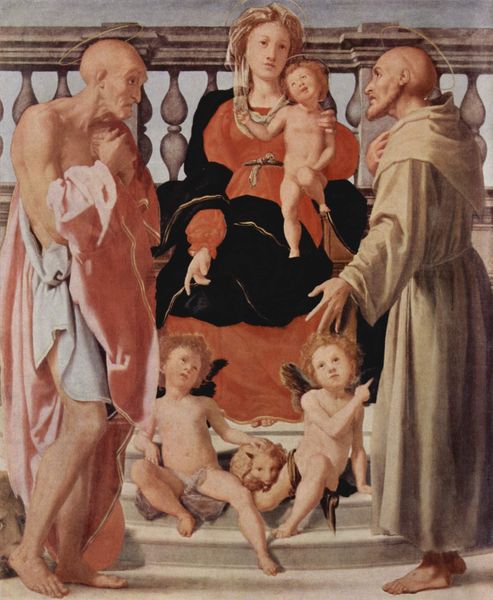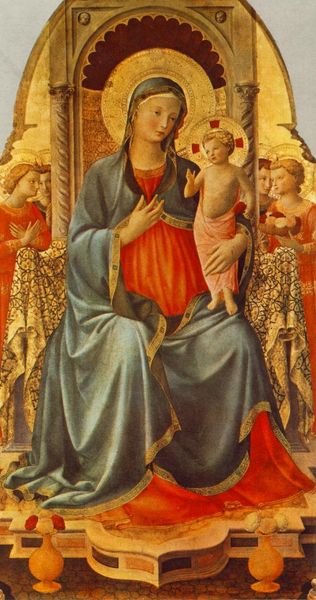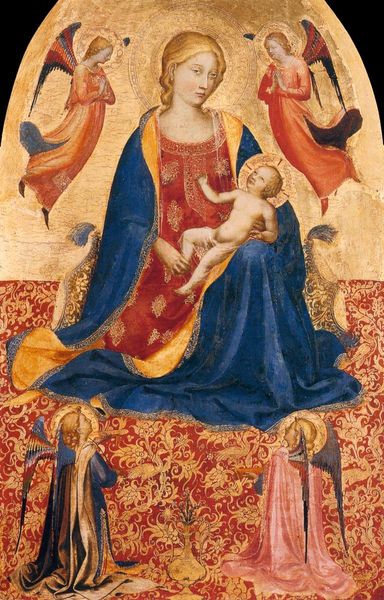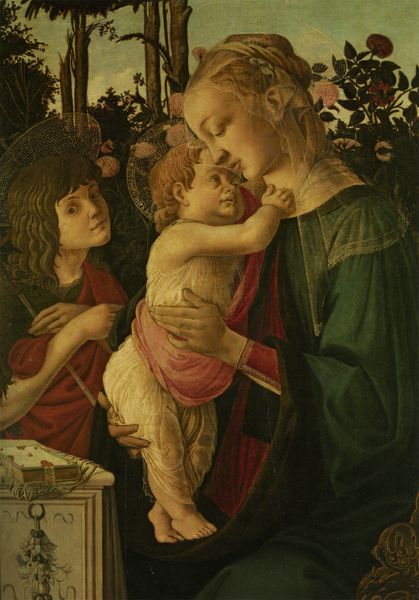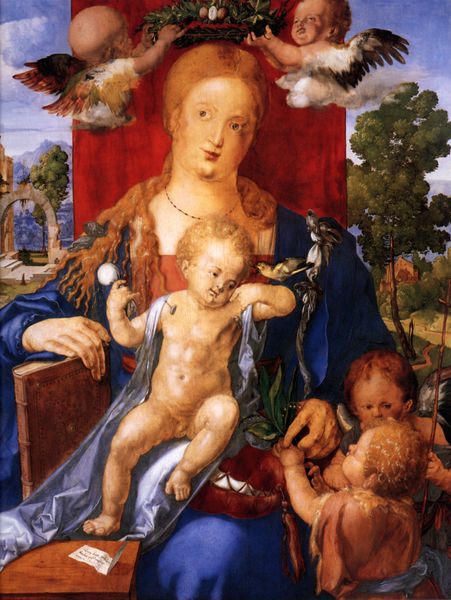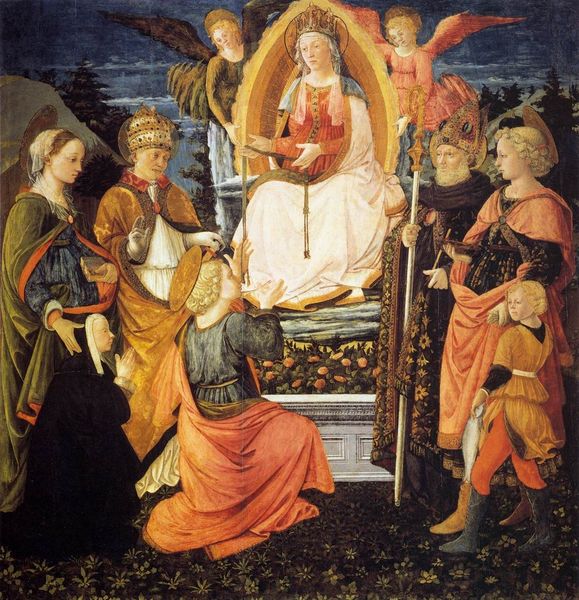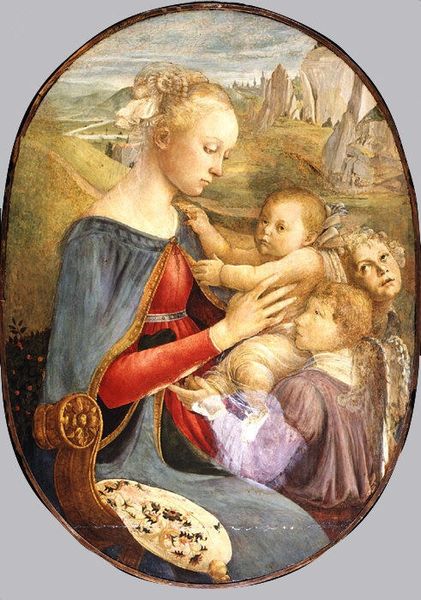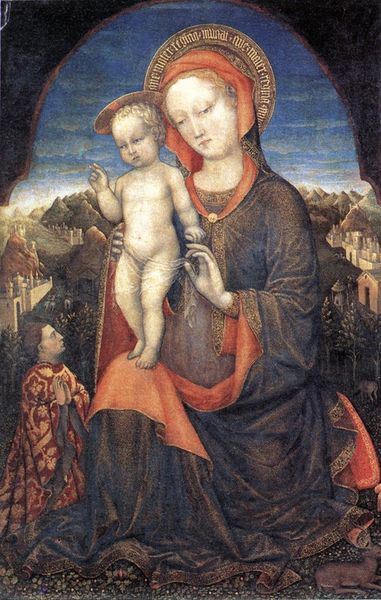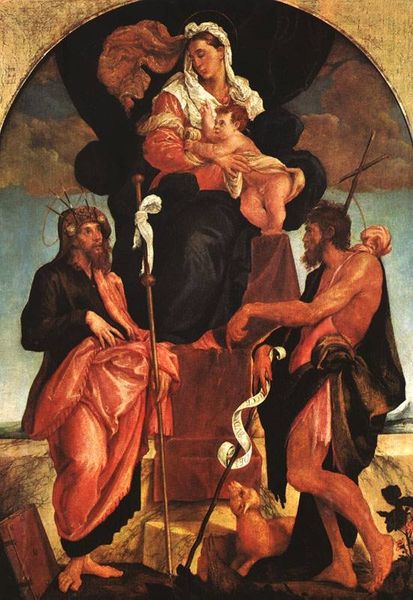
Madonna and Child and the Young St John the Baptist 1495
0:00
0:00
sandrobotticelli
Palazzo Pitti, Florence, Italy
oil-paint
#
oil-paint
#
figuration
#
oil painting
#
child
#
christianity
#
mythology
#
history-painting
#
italian-renaissance
Dimensions: 134 x 92 cm
Copyright: Public domain
Editor: Here we have Botticelli's "Madonna and Child with the Young Saint John the Baptist," painted around 1495. The tenderness feels overwhelming; all three figures seem locked in a shared dream. What's your take on the emotional weight of the piece? Curator: The key here is the *affective* nature of symbolism. Observe how all three halos, symbols of divinity, are nearly flat discs, resembling stylized suns. Doesn't that recall earlier Byzantine iconography? Editor: Yes, the halos feel very different than some of the other Renaissance art we've seen! Curator: Consider too the positioning of John, who embraces Christ but also supports him, already embodying his future role as prophet. Botticelli masterfully weaves anticipation of Christ’s fate within this seemingly peaceful image. Note also the Madonna's downcast gaze, not sorrowful but contemplative. Is she remembering or foreseeing? The painting offers a cycle, the eternal return. Editor: It’s interesting how these symbolic elements create that feeling. I hadn't noticed the premonition within the tender embrace, or the cyclic, timeless quality. Curator: The cultural memory embedded in these images connects us to the beliefs and fears of Botticelli’s time, reminding us that these symbolic languages endure. Editor: Thank you. Seeing these connections enriches the painting and gives it so much more depth. Curator: Indeed, by understanding the symbols, we unlock deeper meanings within.
Comments
No comments
Be the first to comment and join the conversation on the ultimate creative platform.
